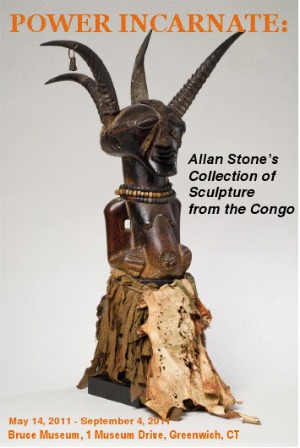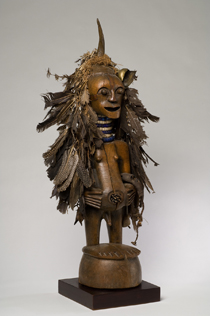 With the recent announcement that the Museum for African Art will not open on schedule later this year, but rather in the second half of 2012, there’s a gap in the range of African art to be seen in New York. The much-praised Dynasty and Divinity: Ife Art in Ancient Nigeria traveling exhibition, which opens Friday at the Indianapolis Museum of Art after tours in London, Houston and Richmond, was supposed to come to New York later this year, an inaugural show for the MFAA, which co-organized it. Now the museum won’t be ready.
With the recent announcement that the Museum for African Art will not open on schedule later this year, but rather in the second half of 2012, there’s a gap in the range of African art to be seen in New York. The much-praised Dynasty and Divinity: Ife Art in Ancient Nigeria traveling exhibition, which opens Friday at the Indianapolis Museum of Art after tours in London, Houston and Richmond, was supposed to come to New York later this year, an inaugural show for the MFAA, which co-organized it. Now the museum won’t be ready.
If a new venue has surfaced for Ife, I haven’t seen word of it, and I am wondering what will happen to the show between next Jan. 16, when it closes at the IMA, and the second half of 2012 — assuming the MFAA makes that goal and the show can remain intact. Doubtful…sorry to say, though I hope I am wrong.
But, while it’s not the same thing at all, there is another African art exhibition in the neighborhood that, based on the catalogue, is well worth noting: Power Incarnate: Allan Stone’s Collection of Sculpture from the Congo at the Bruce Museum in Greenwich.
As the art world knows, Stone was a legendary New York dealer and a fine collector who died in 2006. The first sale of his estate, at Christie’s, fetched $52.4 million, and the second, at Sotheby’s in May, brought $54.8 million, according to The New York Times.
 Well, the man had an eye, as the saying goes, and it extended way beyond contemporary art, as the Bruce show demonstrates.
Well, the man had an eye, as the saying goes, and it extended way beyond contemporary art, as the Bruce show demonstrates.
These African sculptures are “power figures,” intended to protect their communities.
As the Bruce says in its description, “the dense layers of applied materials create what the Kongo referred to as ngitukulu, or “astonishment.” To which I would add, “and how.” They are beautiful in a non-Western sense. The two examples shown here are a good demonstration.
“We got the show because I knew Allan for years, borrowed from him repeatedly, and regularly brought our collectors’ groups to his home and its legendary jampacked collection,” says Bruce director Peter C. Sutton, when I asked him how it came about. Sutton says no works in the exhibit have been consigned for sale — my thoughts on single-collector shows are here — but he assumes they will be sold eventually.
While I am talking about Stone, I must take note of the sad fact that is estate is the subject of litigation. According to various press reports, including this one in the New York Post, Stone’s widow Clare has accused his executor, Lelia Wood-Smith, of improperly using money from his $300 million estate to purchase a home in Greenwich and moving parts of his collection into it. Mrs. Stone seeks Wood-Smith’s removal. One of his six daughters has also said that Wood-Smith, unbeknownst to the family, has taken some of her commission in art works.
Photo Credits: Courtesy of the Bruce Museum/Allan Stone Collection
